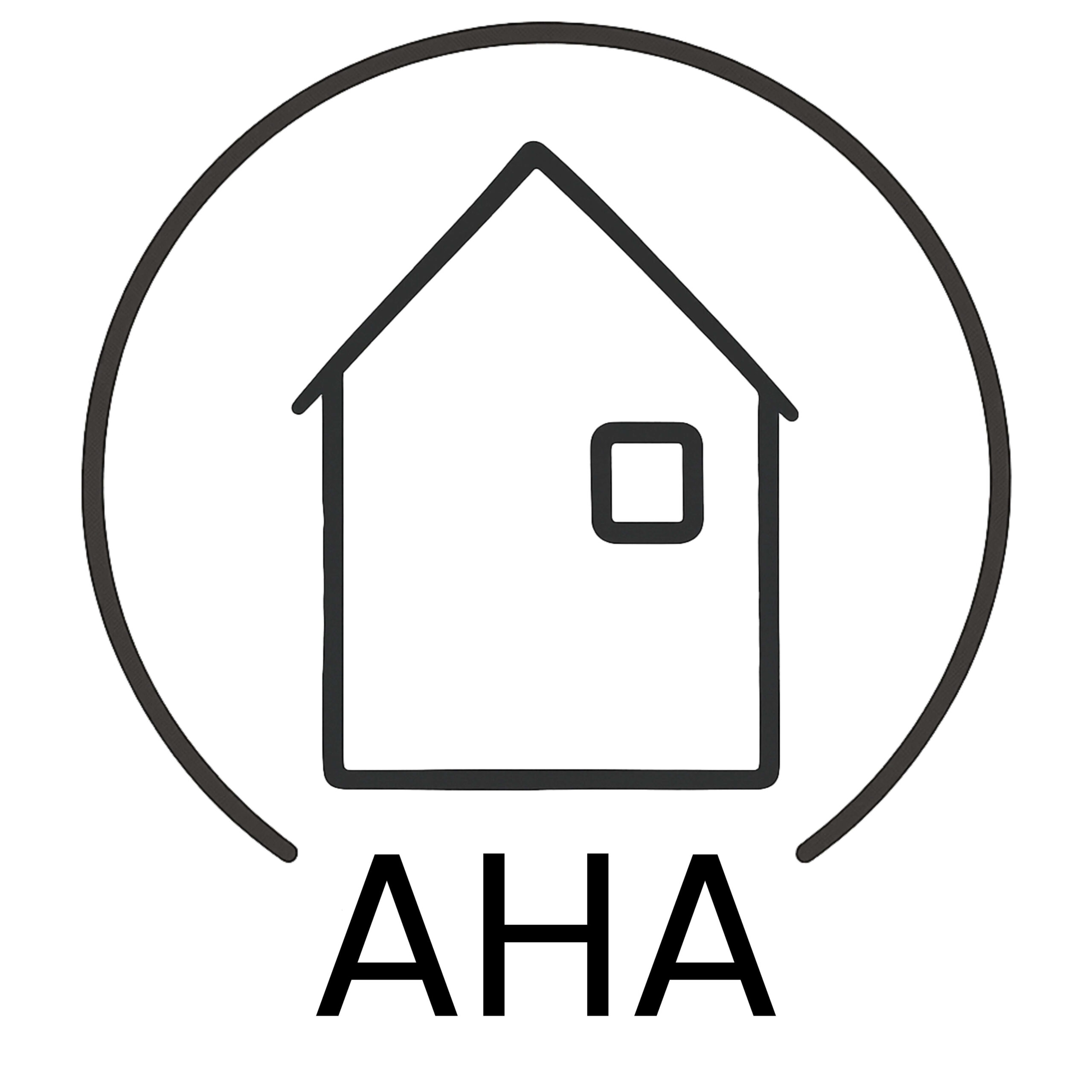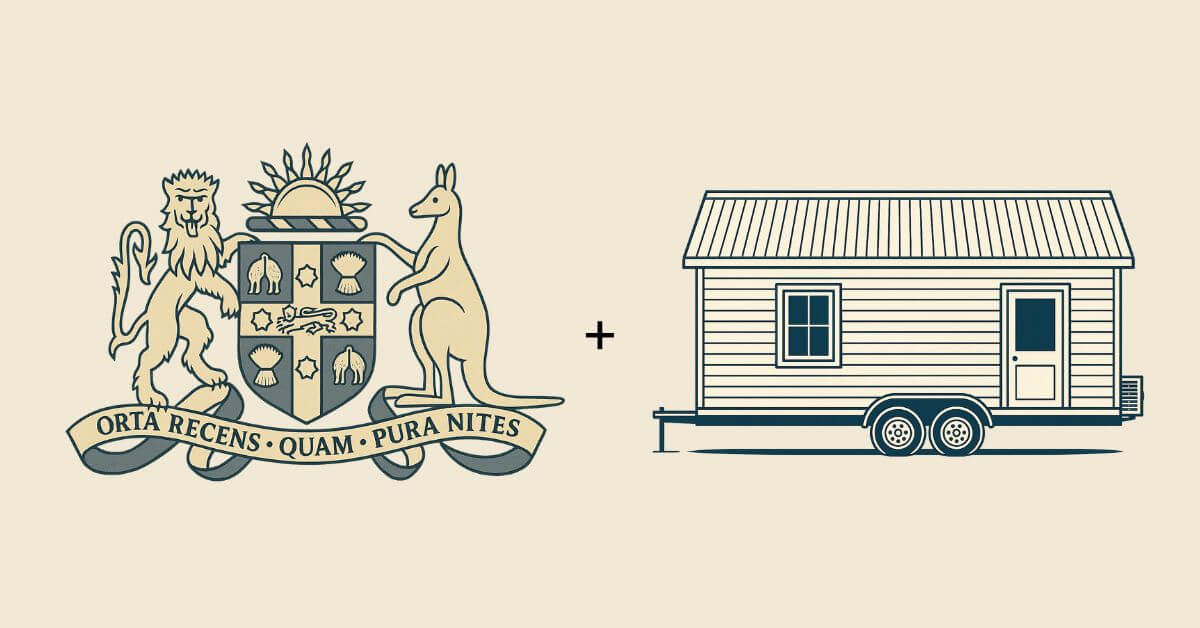Tiny homes are transforming living in New South Wales (NSW), offering affordable, sustainable solutions to the housing crisis. Understanding regulations is key to realizing your tiny home dream without legal issues. This guide provides a comprehensive overview of tiny home regulations in NSW, covering tiny homes on wheels and tiny homes on foundations.
We’ll keep this post updated as regulations evolve.
Note: This guide greatly simplifies complex regulations but should not be considered legal advice. Contact your local council to confirm requirements before proceeding.
Regulations for tiny homes on wheels in NSW
Tiny home on wheels (THOWs) are treated as trailers, offering flexibility for temporary or long-term living. Compliance with road and council regulations ensures legality and safety.
Registration requirements
Under the Road Transport Act 2013, tiny homes on wheels must be registered with Roads and Maritime Services (RMS) as trailers, meeting Australian Design Rules (ADRs) for road legality:
- Weight: Up to 4.5 tonnes (4,500 kg)
- Width: 2.5 meters (including wheel guards)
- Height: 4.3 meters
- Length: 12.5 meters (including drawbar)
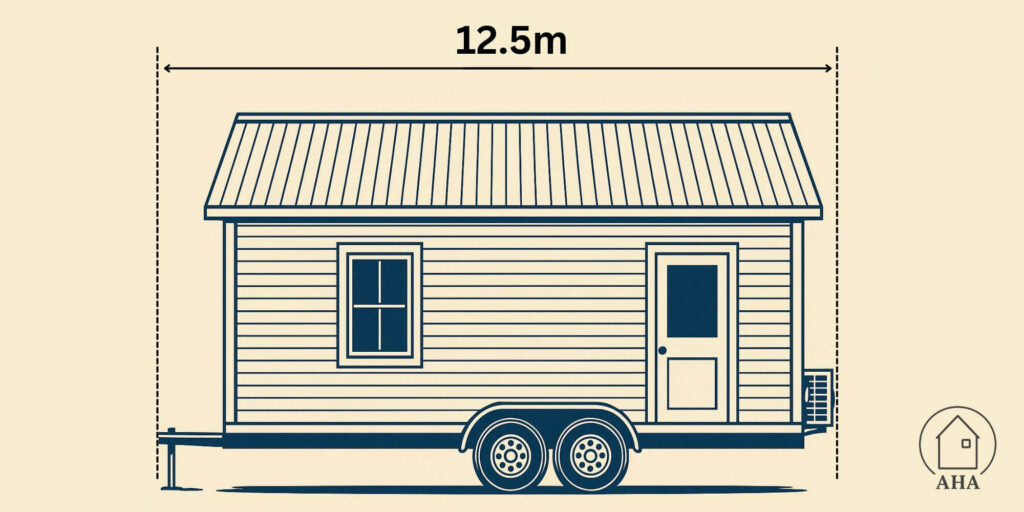
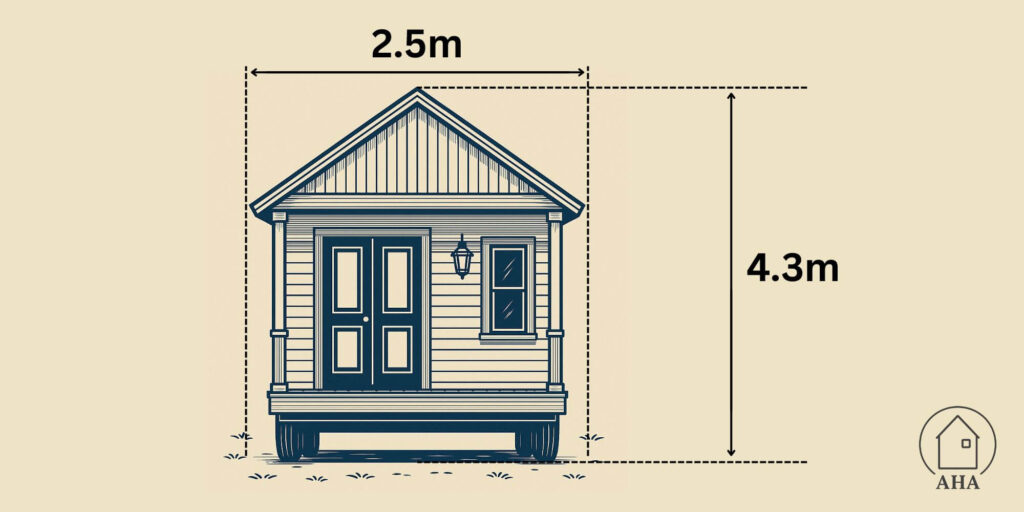
A standard 7.2-meter tiny home on wheels fits within these limits, allowing you to tow it without extra permits.
Exceeding the dimensions set by the Australian Design Rules requires an oversized load permit, which can be costly and involve complex transport planning, such as hiring pilot vehicles.
Towing and road transport rules
Towing a THOW requires adherence to NSW road rules for safety and compliance. If your THOW meets Australian Design Rules (ADRs) limits (2.5m wide, 4.3m high, 12.5m long, 4.5 tonnes), you can tow it with a vehicle rated for at least 4.5 tonnes, like a heavy-duty SUV or truck, without special permits.
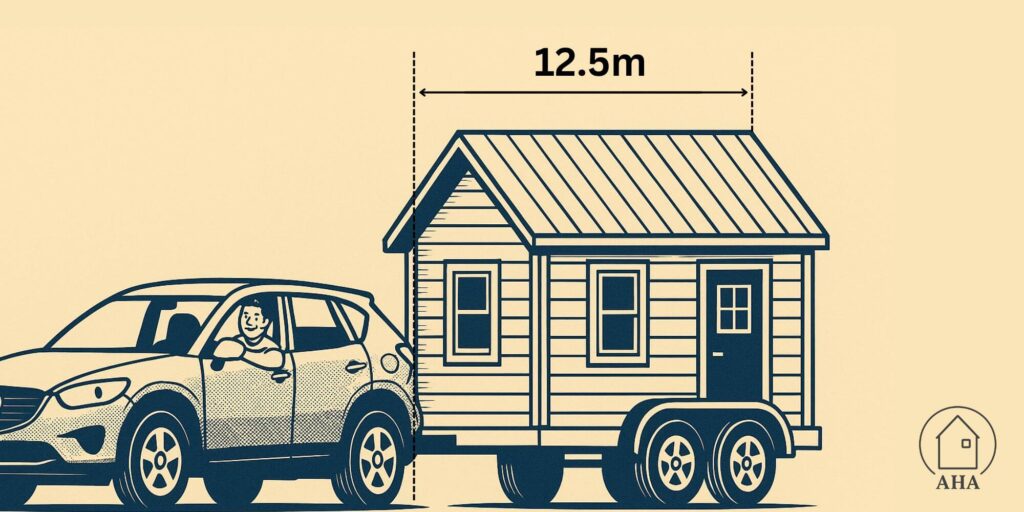
Key Towing Rules:
- Vehicle Requirements: Use a vehicle with a towing capacity matching or exceeding the THOW’s weight (e.g., a 4.5-tonne-rated truck for a 4-tonne THOW).
- Licensing: A Class C driver’s license covers towing up to 4.5 tonnes. Heavier THOWs may need an LR or MR license.
- Road Compliance: THOWs must have functional brakes, lights, and reflectors per ADR standards.
- Oversized Loads: THOWs exceeding ADR limits require an oversized load permit from NSW Police and RMS, costing $50–$500, plus pilot vehicles for loads over 3.5m wide or 19m long.
- Towing Restrictions: Oversized loads may face urban peak-hour restrictions (e.g., 7–9 AM, 4–6 PM).
A 7.2-meter THOW can be towed by a 4.5-tonne truck, but a 3-meter-wide THOW needs a permit and two pilot vehicles.
When you need council approval in NSW for tiny homes on wheels
If your Tiny Home on Wheels (THOW) setup doesn’t meet specific exemptions under New South Wales regulations, you’ll need to obtain council approval to stay on the right side of the law.
The Local Government (Manufactured Home Estates, Caravan Parks, Camping Grounds and Moveable Dwellings) Regulation 2021 outlines when formal approval is required, particularly for long-term or non-exempt uses.
Here’s a quick summary for when approval is required:
- Primary Residence on Vacant Land: Using a THOW as the sole home without a primary dwelling requires a DA for zoning and utilities (e.g., water, sewage, power). For example, a THOW on a rural plot without a main house needs council approval.
- Exceeding Temporary Limits: Stays beyond 2 consecutive days per visit or 60 days per year require a DA or caravan park/camping ground classification.
- Multiple THOWs for Non-Exempt Uses: Operating multiple THOWs for rentals, holiday accommodations, or communities requires a DA and possible land reclassification.
- Zoning Restrictions: Land zoned for environmental conservation or prohibiting moveable dwellings requires a DA or rezoning.
Approval Process: Submit a DA with THOW details (size, location, utilities, environmental impact) and engineering certifications. Fees ($500–$5,000) and processing times (weeks to months) vary. Consider a planning consultant for complex projects.
The following is a more detailed breakdown of council approval scenarios.
1. Using a tiny home on wheels as your only home
If you plan to live in a tiny home on wheels full-time on a property without an existing primary dwelling (such as a main house), council approval is required. Unlike setups where a THOW is placed on owner-occupied land with a primary dwelling, using a THOW as the sole residence on vacant land involves submitting a Development Application (DA). This ensures compliance with zoning, safety, and utility requirements, like access to water, sewage, and power.
Example: If you purchase a rural plot and want to live in a THOW without building a main house, you’ll need to file a DA with your local council.
2. Stays exceeding temporary limits
For short-term use, Tiny Homes on Wheels can be placed on a property for up to 2 consecutive days per visit or a total of 60 days per year without approval. If occupants stay longer you’ll need council approval.
This typically involves a DA or permission to classify the property as a caravan park or camping ground, depending on the duration and frequency.
Classifying as a caravan park or camping ground
Per Clause 9 and Part 3 of the Local Government (Manufactured Home Estates, Caravan Parks, Camping Grounds and Moveable Dwellings) Regulation 2021, use of your Tiny Home on Wheels could exceed the temporary stay limits (2 consecutive days per visit or 60 days per year) if your property is classified as a “caravan park” or “camping ground.”
Operating such a setup requires council approval via a Development Application (DA) under the Environmental Planning and Assessment Act 1979, ensuring compliance with zoning, safety, and utility standards. Below are some examples:
- Drainage: Adequate systems to manage stormwater and prevent flooding, ensuring the site remains safe and habitable.
- Safety Measures: Fire safety provisions, such as access to fire extinguishers, clear emergency exits, and sufficient spacing between THOWs to reduce fire risks.
- Utility Standards: Connection to reliable water supply and sewage systems, or approved alternatives like composting toilets, to maintain hygiene and environmental standards.
Contact your local council to confirm specific requirements, as they may vary based on your Local Environmental Plan (LEP).
3. Multiple tiny home on wheels for non-exempt uses
Placing more than one tiny home on wheels for family use or two for short-term stays requires council approval if the purpose falls outside the exemptions. For instance, setting up multiple tiny homes on wheels for a rental business, holiday accommodations, or a tiny home community triggers the need for a DA. This may also involve reclassifying the land as a manufactured home estate or caravan park.
If you want to place three tiny homes on wheels on your property to rent out as short-term holiday stays, you’ll need council approval and possibly a change in land use.
4. Zoning or land use restrictions
Even if your tiny home on wheel setup seems exempt, council approval is required if the land’s zoning or planning rules prohibit moveable dwellings.
Some residential, rural, or environmentally sensitive zones may restrict tiny homes on wheels, necessitating a DA or rezoning application. Check your local council’s Local Environmental Plan (LEP) to confirm whether THOWs are permitted on your property.
Example: If your land is zoned for environmental conservation, placing a THOW there, even for personal use, may require council approval to protect the area.
Navigating the approval process
To get council approval, contact your local council to discuss your tiny home on wheel plans and confirm the application process. Most councils require a Development Application, including details about the THOW’s size, location, utilities, and environmental impact.
You may also need engineering certifications to prove the tiny home on wheel’s structural safety. Be aware of application fees, which vary by council, and potential processing times, which can take weeks or months.
For complex projects, consider hiring a planning consultant to guide you through the process.
Understanding when council approval is needed helps you plan your tiny home on wheel project confidently and avoid legal pitfalls. Always consult your local council early to clarify rules specific to your property.
When you don’t need council approval in NSW for tiny homes on wheels
If your tiny home on wheels (THOW) setup aligns with specific exemptions under the Local Government (Manufactured Home Estates, Caravan Parks, Camping Grounds and Moveable Dwellings) Regulation 2021, you can use a THOW without needing council approval.
These exemptions (outlined in Clause 77) provide flexibility for certain scenarios, allowing you to avoid a Development Application (DA) process and complex paperwork.
Here’s a quick summary for when approval is not required:
- Long-Term Use on Owner-Occupied Land: One THOW on land with a primary dwelling can be used indefinitely by the owner or household members.
- Example: A THOW in your backyard for your child’s long-term use needs no approval if maintained.
- Short-Term Stays: Up to two THOWs for guests can stay for 2 consecutive days per visit or 60 days total per year.
- Example: A friend’s 2-day stay or workers’ 6-week harvest stay (under 60 days) is exempt.
- Special Circumstances: THOWs for seasonal workers (e.g., fruit pickers) or disaster relief (up to 2 years, extendable) need no approval.
- Example: A THOW for harvest workers or bushfire-displaced families is exempt.
The following is a more detailed breakdown of scenarios not requiring council approval.
1. Long-term use on owner-occupied land
You can place one tiny home on wheels on land you own, provided there’s an existing primary dwelling (like a main house), without needing council approval. This exemption allows the THOW to be occupied by you, the landowner, or anyone registered as part of your household, such as family members or housemates listed at the property’s address.
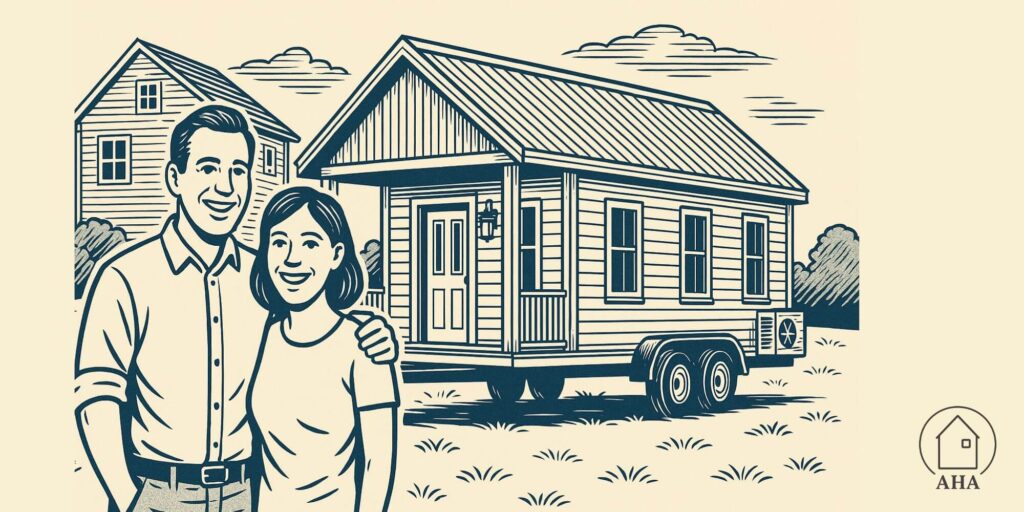
There’s no time limit, meaning the THOW can be used indefinitely as long as it’s kept safe, structurally sound, and hygienic.
Example: If you own a home and place a tiny home on wheels in your backyard for your adult child to live in long-term, no council approval is needed, provided the unit is well-maintained.
2. Short-term stays for guests
For temporary use, you can host up to two tiny home on wheels (or other moveable dwellings like tents) on your property without council approval, as long as stays are limited to 2 consecutive days per visit or a total of 60 days per year across multiple visits.
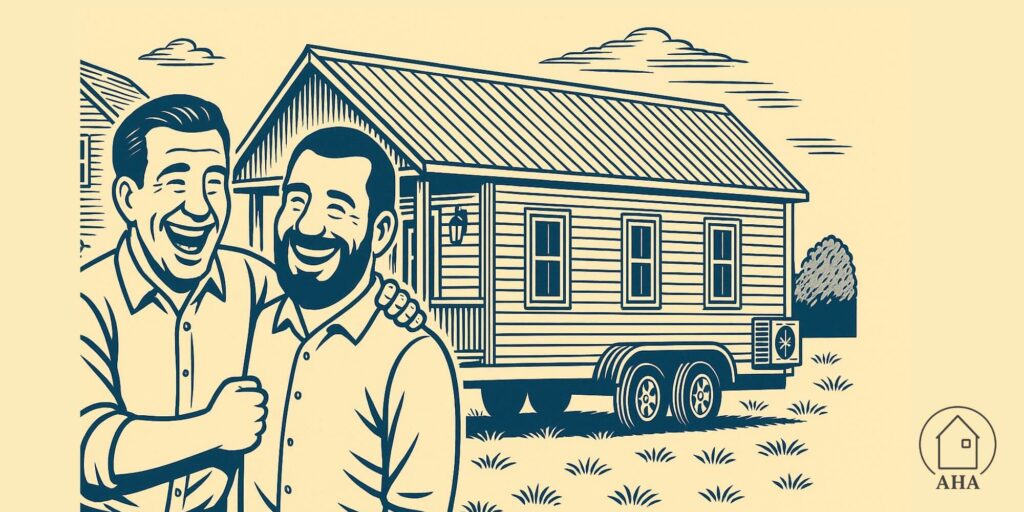
This exemption is perfect for accommodating friends, guests, or seasonal workers.
Example: You could let a friend stay in a THOW for a 2-day weekend or allow workers to use two THOWs during a 6-week harvest, as long as the total usage stays under 60 days annually.
Wait a minute, so you’re telling me that if I have a friend that wants to stay in my tiny home on wheels in my backyard for the weekend (2 days) I won’t need council approval, but for the long weekend (3 days total), I’d need council approval?
Unfortunately, that seems to be the case.
Is it a stupid rule?
Absolutely.
But as tiny home living becomes more popular, NSW councils are likely to remove, or at least significantly tone down stupid restrictions like this, so stay tuned! In the meantime, the best way to bypass this restriction is to classify your property as a caravan park or camping ground.
3. Special circumstances
Additional exemptions apply in specific cases. For instance, tiny homes on wheels can be used without council approval on agricultural or pastoral land to house seasonal workers, such as fruit pickers during a harvest.
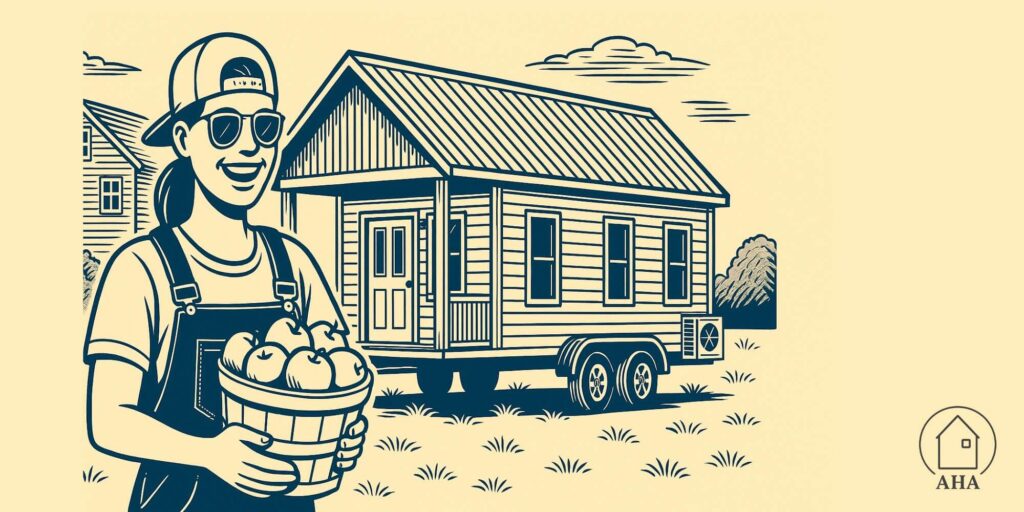
Similarly, those displaced by natural disasters (e.g., floods or bushfires) can use THOWs as temporary homes for up to 2 years, with possible extensions, without needing a DA.
Example: A farmer could place a THOW on their property for harvest workers, or a family affected by a bushfire could live in a THOW on their land during rebuilding, both without council approval.
Key considerations
To qualify for these exemptions, ensure your tiny home on wheels complies with safety and maintenance standards, and confirm that your land’s zoning permits moveable dwellings (check your local council’s Local Environmental Plan).
If your plans fall outside these exemptions – such as using a tiny home on wheels as your only home or exceeding stay limits – you’ll need to seek council approval, as outlined earlier.
Whenever you’re in doubt, a quick call to your local council can clarify what’s allowed.
Use this directory to find the contact details of your local council.
Regulations for tiny homes on foundations in NSW
Tiny homes on foundations, treated as secondary dwellings under the State Environmental Planning Policy (Housing) 2021, follow a structured approval process. You’ll need a Development Application (DA) or Complying Development Certificate (CDC) from your local council to ensure the tiny home on foundations meets zoning, planning, and safety rules.
Using a tiny home on foundations as a primary dwelling
Tiny home on foundations can serve as primary residences on land zoned for residential use, but councils typically require a main dwelling on the property unless you’re in a progressive council area like Shellharbour, which has a pilot program allowing more flexibility.
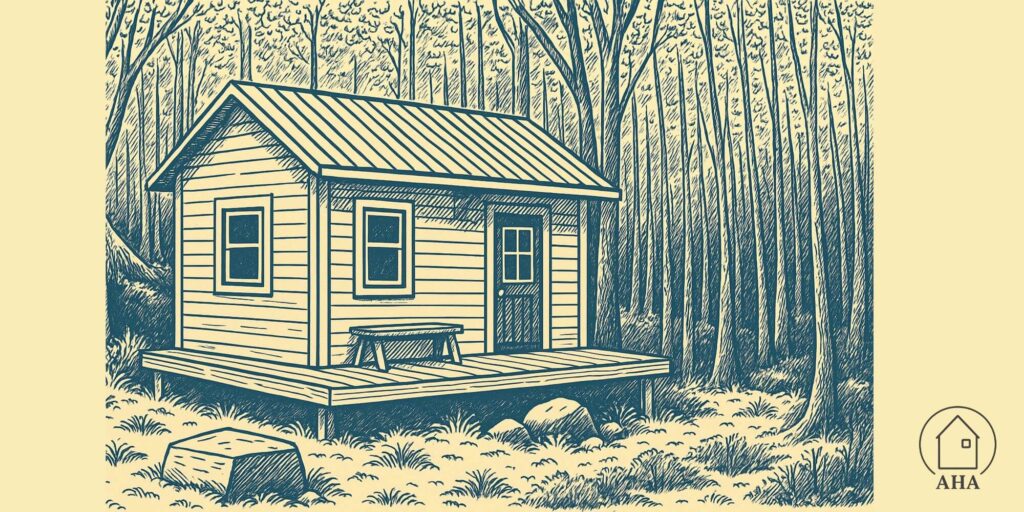
Here’s a quick summary of requirements for using a tiny home on foundations as a primary dwelling:
- Council Approval: A DA or CDC is required to meet zoning and safety rules.
- Building Standards: Compliance with the Building Code of Australia (BCA) for structure, fire safety, and efficiency.
- Utilities: Approved water, sewer, and driveway connections; off-grid systems need a waste plan.
- Zoning: Permitted in residential zones; rural zones may need on-site sewage systems.
- Vacant Land: Generally prohibited without a primary dwelling, except in pilot programs.
The following is a more detailed breakdown:
To use a tiny home on foundations as your primary residence, you’ll need to submit a Development Application (DA) to your local council, which can cost between $1,000 and $10,000 depending on the project’s complexity.
In some cases, a Complying Development Certificate (CDC) may be used for faster approval if the tiny home on foundations meets pre-set criteria. The DA or CDC ensures compliance with zoning, safety, and environmental standards.
The tiny home on foundations must adhere to the Building Code of Australia (BCA), which mandates standards for:
- Structural Integrity: Strong foundations to withstand environmental conditions.
- Fire Safety: Installation of smoke alarms and fire-resistant materials.
- Energy Efficiency: Adequate insulation and ventilation for comfort and sustainability.
- Accessibility: In some cases, features like wheelchair ramps may be required.
Utility connections are mandatory under Section 68 of the Local Government Act 1993.
This includes water, sewer, and driveway approvals. If you prefer off-grid solutions, such as rainwater tanks or composting toilets, you’ll need a council-approved waste management plan detailing safe disposal methods.
Zoning-wise, tiny home on foundations are typically allowed in residential zones (e.g., R1 or R2). In rural zones, additional requirements, such as installing an on-site sewage system like a septic tank, may apply.
Example: In a Sydney suburb, you could build a tiny home on foundations as a primary home with a DA, BCA-compliant design, and utility connections. In a rural area, you’d need a septic tank plan to meet council requirements.
Using a tiny ome on foundations as a secondary dwelling
Tiny home on foundations are commonly used as secondary dwellings, such as granny flats, in backyards for family members, tenants, or short-term rentals, offering flexibility in residential zones.
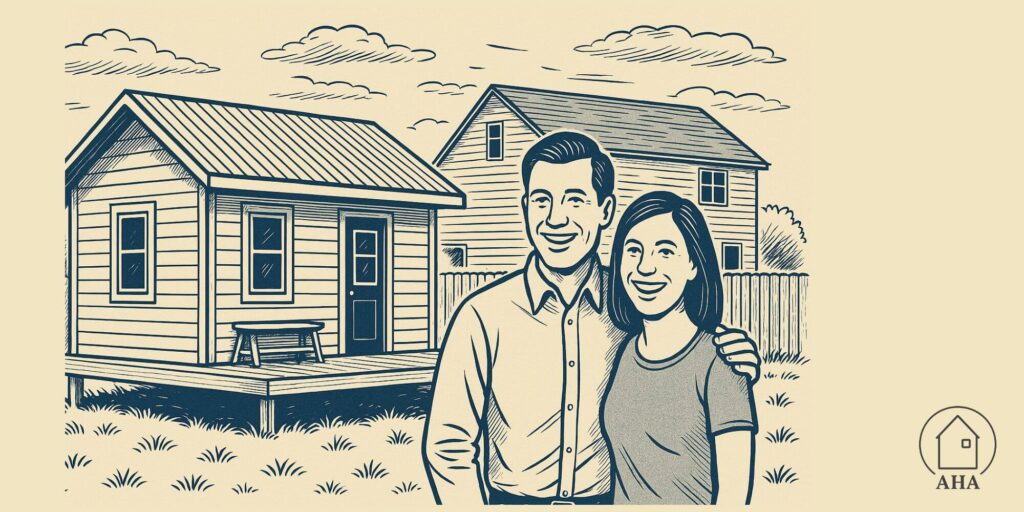
Here’s a quick summary of requirements for using a tiny home on foundations as a secondary dwelling:
- Council Approval: A DA or CDC ensures compliance with zoning and setback rules.
- Building Standards: BCA compliance for structure, fire safety, and efficiency.
- Utilities: Approved connections or off-grid systems with waste plans.
- Zoning and Placement: Allowed in residential zones with a primary dwelling; setbacks range from 1–3 meters.
- Size Limits: Typically under 60m² per council Development Control Plans (DCPs).
The following is a more detailed breakdown:
To build a tiny home on foundations as a secondary dwelling, you’ll need to submit a Development Application (DA) or, in some cases, a Complying Development Certificate (CDC) to your local council.
The DA ensures the tiny home on foundations complies with zoning, setback, and safety rules outlined in the State Environmental Planning Policy (Housing) 2021 (e.g., Clause 3.29 for secondary dwellings).
A CDC may be used for streamlined approval if the project meets standard criteria.
The tiny home on foundations must meet Building Code of Australia (BCA) standards, including:
- Structural Safety: Robust foundations and weather-resistant materials.
- Fire Protection: Smoke alarms and fire-safe construction.
- Energy Efficiency: Insulation and energy-efficient windows.
Utility requirements, per Section 68 of the Local Government Act 1993, include connections to water, sewer, and driveways. Off-grid options, like composting toilets or rainwater tanks, are allowed with a council-approved waste management plan.
Most councils limit secondary dwellings to 60m² to maintain neighborhood aesthetics.
Zoning and placement rules
Where you place your tiny home depends on zoning and placement rules, which vary across NSW’s 100+ councils, each with its own policies based on local zoning and planning objectives.
Here’s a quick summary of zoning and placement rules:
- Council Variations: Rules differ; supportive councils like Shellharbour and Eurobodalla allow more flexibility, while urban councils like Sydney enforce stricter approvals.
- Setbacks: 1–3 meters from boundaries, per SEPP Housing 2021 and DCPs.
- Residential Zones: Often 1-meter setbacks (e.g., Eurobodalla tiny home on foundations).
- Rural Zones: Typically 3-meter setbacks.
- Pilot Programs: 1.5-meter setbacks (e.g., Shellharbour THOW).
- Vacant Land: Prohibited for tiny home on wheels and tiny home on foundations without a primary dwelling, except in pilot programs.
The following is a more detailed breakdown:
Zoning and placement rules are shaped by each council’s Local Environmental Plan (LEP) and Development Control Plan (DCP). Supportive councils, like Shellharbour, allow long-term THOW residency through a pilot program, while Eurobodalla permits tiny home on foundations as rentals or family homes with streamlined approvals.
Most councils limit secondary dwellings to 60m² to maintain neighbourhood aesthetics.
Urban councils, such as those in Sydney, often require more rigorous Development Applications. For example, Tweed Shire limits THOW stays to 180 days per year, whereas Byron Shire allows long-term THOWs for family members without time limits.
A critical placement rule is the setback, defined as the minimum distance a tiny home (THOW or tiny home on foundations) must be placed from property boundaries, neighboring buildings, or features like roads. Setbacks, mandated by the State Environmental Planning Policy (Housing) 2021 (e.g., Clause 3.29 for secondary dwellings) and council DCPs, typically range from 1 to 3 meters, depending on the council and zoning.
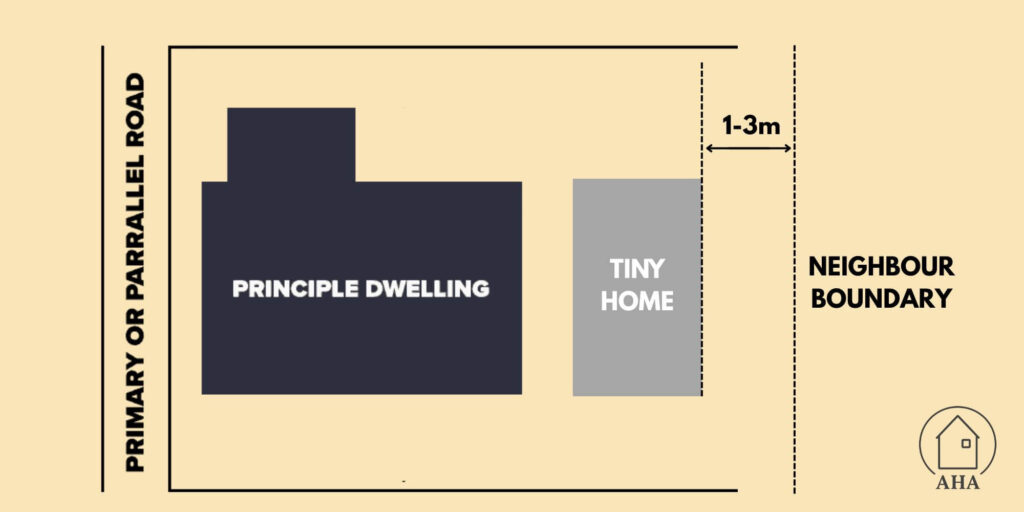
In residential zones, setbacks are often 1 meter for tiny home on foundations, while rural zones may require 3 meters due to larger properties. Contact your local council to confirm the specific setback rules in your area.
These distances ensure privacy, allow emergency access (e.g., for fire trucks), and maintain neighbourhood aesthetics.
Living in a tiny home on vacant land (land without a main house) as a permanent residence is generally prohibited. Councils require a primary dwelling on the property before allowing a THOW or tiny home on foundations, except in progressive areas like Shellharbour’s pilot program.
Progressive council policies
Some councils are paving the way for flexible policies that make it easier to live in tiny homes. Currently, there are two NSW councils that are most accommodating for tiny homes: Shellharbour and Eurobodalla.
As a tiny home enthusiast, it’s worth following how the rules progress in these councils, as they could provide advanced awareness of future reforms across NSW.
Shellharbour
In September 2025, Shellharbour proposed a two-year LEP trial for THOWs as long-term rentals on private properties with existing dwellings, simplifying approvals (setbacks ≥1.5m, utility connections). Monitor for state-wide influence. This makes permanent THOW living possible in Shellharbour with council approval, a significant step forward for tiny home enthusiasts.
Eurobodalla
Eurobodalla Council supports tiny home on foundations as rental properties or family homes, offering simpler approval processes than urban councils.
For example, you could build a tiny home on foundations to rent out in Eurobodalla with a straightforward Development Application, avoiding the complex requirements of councils like Sydney.
Eurobodalla also provides a dedicated webpage for tiny homes approvals.
These progressive policies demonstrate how some councils are adapting to the growing popularity of tiny homes, making it easier for residents to embrace this sustainable housing option.
Timeline of tiny home regulations in NSW
To understand today’s rules, it helps to see how NSW’s tiny home laws have evolved. Below is a timeline of key legislative changes in the tiny home sector.
Local Government (Caravan Parks and Camping Grounds) Regulation 1995
Set guidelines for the operation of caravan parks and camping grounds, and to the installation of moveable dwellings.
Read LegislationLocal Government (Manufactured Home Estates, Caravan Parks, Camping Grounds and Moveable Dwellings) Regulation 2005
Updated 1995 regulation, confirming exemptions for short stays, family use, and seasonal workers.
Read LegislationState Environmental Planning Policy (Affordable Rental Housing) 2009
Introduced rules for secondary dwellings, allowing them in residential zones with council approval and Building Code of Australia compliance.
Read LegislationLocal Government (Manufactured Home Estates, Caravan Parks, Camping Grounds and Moveable Dwellings) Regulation 2021
Replaced 2005 regulation, clarifying exemptions for short stays, family use, seasonal workers, or disaster relief (up to 2 years), requiring approval for permanent residency.
Read LegislationState Environmental Planning Policy (Housing) 2021
Updated 2009 SEPP, simplifying approvals with Development Applications or Complying Development Certificates in residential zones, requiring BCA and utility compliance.
Read LegislationDisaster Relief Moratorium for Moveable Dwellings
Set guidelines for temporary homes for up to 2 years for those displaced by natural disasters, with possible extensions.
Read on ABC NewsShellharbour Tiny Homes Pilot Program
Shellharbour proposed a two-year LEP trial for THOWs as long-term rentals on private properties with existing dwellings.
Read on ABC NewsHow NSW tiny home regulations compares to other states
NSW’s tiny home regulations differ from other Australian states and territories, each with unique approaches to tiny homes and wheels and tiny homes on foundations.
Below is a comparison to help you understand how NSW stacks up.
Victoria
- Tiny homes on wheels: In Victoria, tiny homes on wheels are classified as caravans under the Residential Tenancies Act 1997, limited to 30 days per year on private property without council approval.
Longer stays require a planning permit, which can be restrictive compared to NSW’s 60-day exemption.
- Tiny homes on foundations: Tiny homes on foundations, treated as secondary dwellings under 60m², typically require only a building permit under the Building Act 1993, making approvals simpler and faster than NSW’s Development Application (DA) or Complying Development Certificate (CDC) process.
Victoria’s streamlined tiny home on foundation rules make it attractive for permanent residency.
Queensland
- Tiny homes on wheels: Queensland classifies THOWs as caravans under the Residential Tenancies Act 2014, with fewer zoning restrictions than NSW’s council-specific rules, enabling easier temporary or permanent living on private land.
Queensland’s relaxed tiny home on wheel regulations provide more flexibility than NSW, especially for rural properties.
- Tiny homes on foundations: Tiny homes on foundations require council planning approval similar to NSW, but some councils (e.g., Noosa) offer streamlined processes for secondary dwellings under 60m².
Western Australia
- Tiny homes on wheels: In Western Australia, tiny homes on wheels are treated as movable dwellings. Councils like the Shire of Esperance allow permanent THOWs with planning approval under local schemes, subject to utility connections.
A 2024 statewide policy under the Caravan Parks and Camping Grounds Act 1997 permits tiny home on wheel occupancy for up to 2 years with council consent, offering more consistent regulations than NSW’s varied council policies.
- Tiny homes on foundations: Tiny home on foundations require building approvals, similar to NSW’s DA/CDC process, but with fewer restrictions in rural areas.
South Australia
- Tiny homes on wheels: In South Australia, THOWs are classified as caravans under the Residential Parks Act 2007, allowing temporary stays (up to 60 days per year) on private land without permits, similar to NSW.
Longer stays or permanent residency require council approval via a development application, often with stricter utility requirements than Queensland.
- Tiny homes on foundations: Tiny homes on foundations, treated as secondary dwellings, need development approval under the Planning, Development and Infrastructure Act 2016, with processes comparable to NSW’s DA/CDC but varying by council.
South Australia’s regulations are slightly more restrictive for tiny homes on wheels than Queensland but align closely with NSW for tiny homes on foundations.
Tasmania
- Tiny homes on wheels: Tasmania regulates tiny homes on wheels as caravans under the Land Use Planning and Approvals Act 1993, permitting temporary stays (up to 6 months) on private land with council permission, offering more flexibility than Victoria’s 30-day limit but less than Queensland.
Permanent THOW residency typically requires reclassification as a dwelling, involving complex planning approvals.
- Tiny homes on foundations: Tiny homes on foundations, considered secondary dwellings, need development approval and compliance with the Building Act 2016, with stricter requirements than Victoria’s building permits.
Tasmania’s rules are more rigid than NSW’s for permanent tiny homes on wheel use but similar for tiny homes on foundations.
Australian Capital Territory (ACT)
- Tiny homes on wheels: In the ACT, THOWs are treated as temporary dwellings under the Planning and Development Act 2007, allowing short-term use (up to 12 months) on residential land with a temporary permit, more generous than Victoria but requiring more oversight than Queensland.
Permanent tiny home on wheel living is rare and needs development approval.
- Tiny homes on foundations: Tiny homes on foundations, considered as secondary residences, require a development application similar to NSW’s DA, with compliance to the Building Act 2004.
The ACT’s urban focus makes tiny home on foundation approvals straightforward but THOWs less flexible than in NSW’s progressive councils.
Northern Territory
- Tiny homes on wheels: The Northern Territory has minimal regulations for THOWs, treated as caravans under the Caravan Parks Act 1986, allowing flexible temporary or permanent use on private land with few zoning restrictions, surpassing Queensland’s leniency.
- Tiny homes on foundations: Tiny homes on foundations require building approval under the Building Act 1993, with processes simpler than NSW’s DA/CDC in remote areas but varying in urban centers like Darwin.
The NT’s relaxed approach benefits THOW owners but lacks the structured tiny home on foundation support seen in NSW’s progressive councils.
What’s next for tiny home regulations in NSW?
While Australia’s process of recognising Tiny Homes may seem painfully slow, there are some developments brewing on the horizon.
Here are a few worth getting excited about:
- The NSW government is considering reforms to planning legislations concerning Tiny Homes on Wheels.
- The Local Government (Manufactured Home Estates, Caravan Parks, Camping Grounds and Moveable Dwellings) Regulation 2021 is scheduled for automatic repeal on September 1, 2026, which could lead to updated rules for moveable dwellings. Post-repeal, NSW Planning is reviewing moveable dwellings.
- Byron Shire Council’s 2019-2020 annual report, noted the adoption of a Tiny Homes Planning Proposal to enable development of tiny houses on council-owned or managed land.
- Byron Shire Council’s Alternative Housing Models report (Stage 1), discussed tiny/relocatable houses (including on wheels) as viable affordable housing options.
- Shellharbour City Council in NSW has proposed a two-year pilot program allowing long-term residency in tiny homes on wheels on private properties with an existing dwelling. This initiative aims to test the viability of THOWs as a housing solution, with potential to influence state-wide policy if successful. The trial will simplify the process for placing mobile tiny homes on existing properties by exempting the need for development applications.
- As of September 1, 2024, Western Australia introduced a policy allowing full-time occupancy of tiny homes on wheels for two years with council approval, with the option for renewal. This statewide change, driven by multiple councils, aims to address housing shortages and sets a precedent for other states
- Western Australia introduced a policy allowing full-time occupancy of tiny homes on wheels for two years with council approval.
- Eurobodalla Shire Council in NSW has implemented policies to streamline approvals for tiny homes (both on wheels and foundations) as secondary dwellings or rental accommodations, supporting their use as affordable housing options. This includes allowing THOWs under specific exemptions, making it easier for residents to use them without complex development applications?
- Surf Coast Shire in Victoria has introduced a pilot program, effective as of 2024, allowing residents to live in THOWs or caravans on properties with an existing dwelling without permits, provided they are not permanent dwellings.
- Bega Valley Shire Council has been advocating for over two years for the NSW government to clarify tiny home regulations, particularly for THOWs classified as caravans. In June 2025, the council called for urgent reforms to address community confusion and prevent enforcement actions like evictions, which could influence broader state policy changes.
